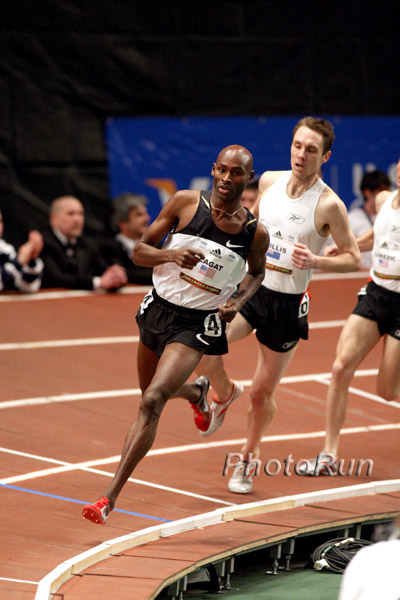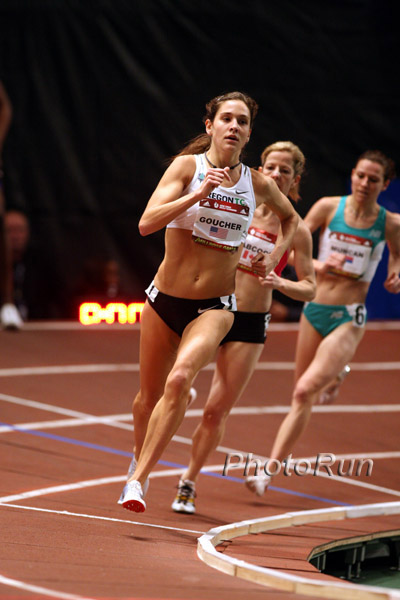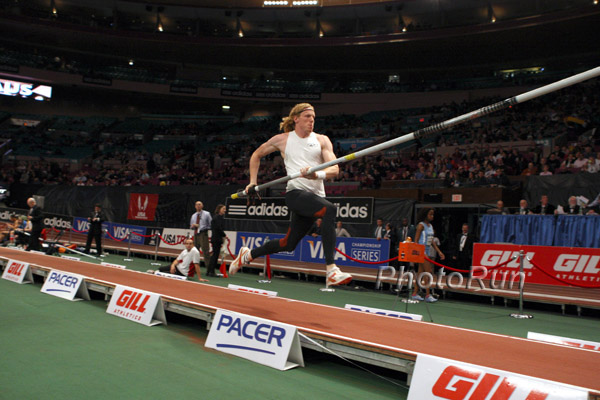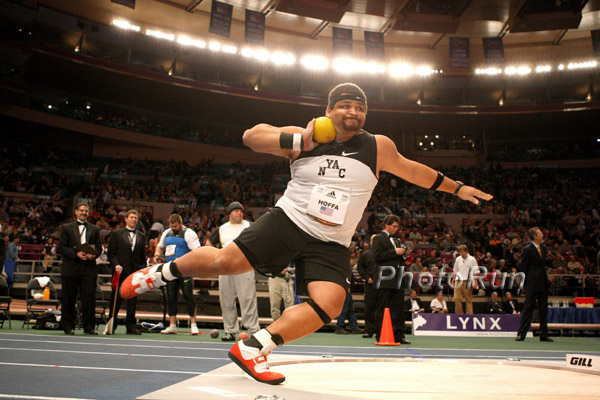 Bernard Lagat, Nick Willis, 2009 MIllrose Games, photo by PhotoRun.net
Bernard Lagat, Nick Willis, 2009 MIllrose Games, photo by PhotoRun.net
Starting Blocks has been the news section for American Track & Field for the past decade. For most of that time, we have been fortunate enough to have Dick Patrick, along with editor emeritus James Dunaway, working on news that would mean something to our primary readers. The primary readers of AT&F are the 37,553 head high school, college and club track & cross country coaches who educate over 1.4 million athletes forty-six weeks a year, six days a week, for an average of two hours, fifteen minutes a day. There is more to our sport than jumping, throwing and running. (If you do not get AT&F and you are a coach, just send your address, and name and title to shootingstarmediacirc@gmail.com, with ” Yes, I would like a subscription to American Track & Field” and you will be receiving AT&F within four weeks. And yes, we have back issues for all 18 years. )
Here is Dick’s homage to the Millrose Games, which appeared in the Summer 2011 issue of AT&F:


Starting Blocks by Dick Patrick of USA TrackNews
For any track fan with an iota of realism, the move of the Millrose
Games from Madison Square Garden uptown to the 168th Street Armory could
not have been a surprise.
Millrose, for nearly a century the most famous indoor meet in
the world, had been struggling: disappointing crowds, disappointing
buzz. The meet could no longer regularly pack the Garden to the rafters
as it did from the 1920s to the 1990s. And the Garden’s 160-yard
track–once the standard for indoor tracks–could not compete with the
dozens of faster 200-meter tracks that became the new standard.
 Steve Hooker, 2009 Millrose Games, photo by PhotoRun.net
Steve Hooker, 2009 Millrose Games, photo by PhotoRun.net
The meet, like Madison Square Garden itself, was simply part of
the declining indoor scene in the United States, which had a virtual
monopoly on indoor track since the first ever indoor meet was held in
New York in the 1880s.
A century later, in 1987, the IAAF awarded its first indoor
world championships to Indianapolis, as a nod to the supremacy of the
U.S. in developing indoor track. But in reality the U.S. circuit already
was in a downtrend, with shrinking sponsorships and losses of meets,
even as indoor track flourished in Europe.
Though the decline of Millrose was inevitable given the trends
of the domestic indoor circuit, that doesn’t make the news any less
devastating. Eamonn Coghlan, the Irish miler adopted by New York fans
for the thrills he provided at Millrose, compared it to the Rose Bowl
going Division III.
The Millrose situation is a body blow to the sport’s
aficionados. It just won’t be the same even though the nicely banked
200-meter synthetic track at the Armory is a superior surface to the
cramped 160-yard board track in the Garden, home to Millrose since 1914.
The 5,000-seat Armory is just not a spectator facility on par with the
18,000-capacity Garden. The new version won’t be the social event that
Millrose was in its heyday, attracting many general sports fans who
often attended no other meet in a year. But those days are gone, just
like the smoky haze from cigarettes and cigars that formed a cloud above
the Garden track during the era before nonsmoking ordinances.
No athletes and not many fans would like to return to the days
of smoke-filled arenas. Norb Sander and his Armory staff have worked a
wonder in restoring it as a hub for high school and college indoor
track. Who knows? Maybe they can work some sort of revival for Millrose
and make it relevant again. One thing’s sure: Thanks to the faster
Armory track, plenty of Millrose meet records will be broken next
February.
 Reese Hoffa, 2009 Millrose Games, photo by PhotoRun.net
Reese Hoffa, 2009 Millrose Games, photo by PhotoRun.net
Those who mourn the change of Millrose’s status recall the glory
days of the meet with the Garden packed to capacity and the crowd in a
frenzy during lead changes of the Wanamaker Mile or another exciting
event with Olympic champions and world record holders. But those days
are a memory, not a current reality. Let’s hope Sander and new meet
director Ray Flynn can create a new, exciting reality for the meet.

Author

Larry Eder has had a 52-year involvement in the sport of athletics. Larry has experienced the sport as an athlete, coach, magazine publisher, and now, journalist and blogger. His first article, on Don Bowden, America's first sub-4 minute miler, was published in RW in 1983. Larry has published several magazines on athletics, from American Athletics to the U.S. version of Spikes magazine. He currently manages the content and marketing development of the RunningNetwork, The Shoe Addicts, and RunBlogRun. Of RunBlogRun, his daily pilgrimage with the sport, Larry says: "I have to admit, I love traveling to far away meets, writing about the sport I love, and the athletes I respect, for my readers at runblogrun.com, the most of anything I have ever done, except, maybe running itself." Also does some updates for BBC Sports at key events, which he truly enjoys. Theme song: Greg Allman, " I'm no Angel."
View all posts




















